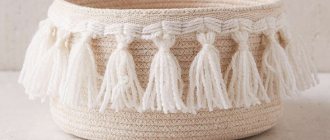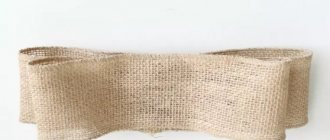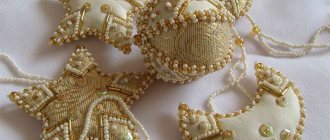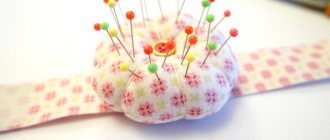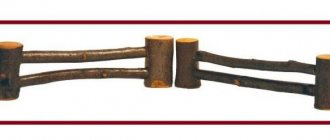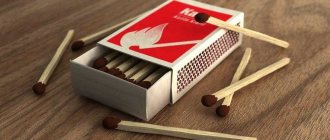Artificial trees will create beauty and comfort in your home.
When planning the design of your home, it is impossible to do without original little things. It is unusual crafts that bring a special charm, emphasizing any style or theme of design. Artificial trees are luxurious decorative elements, the role of which in the interior is difficult to overestimate
In addition to a subtle eco-friendly note, they are a good alternative to living plants and do not require careful care, creation of a microclimate or special conditions. There are many ways to make artificial trees with your own hands: bonsai, topiary, and many other creative ideas. Stylish hand-made crafts will help not only make the interior of rooms more comfortable, but also add fresh, informal notes to the design of a strict institution or office.
Artificial Bonsai Tree: What is it?
Usually work on creating such a tree begins by looking for a good branch for the trunk. Sometimes the branch is a slow-growing plant that, for example, no longer develops. Due to improper growth conditions, the plant acquired an not entirely correct shape - thickening, unevenness, curvature. And these defects can, paradoxically as it sounds, be turned into art.
The base is a container that must be filled with clay, plaster, even plasticine. In a word, something that will hold the mini-tree.
Trimming and design
Creating a pine bonsai is not an easy task due to the difference in pruning method from other crops. Pine growth occurs later than other trees. The development zones also differ: the upper branches grow the fastest. Shaping circumcision begins in the first years. It is difficult for an adult tree to form the desired appearance. Autumn pruning will reduce the loss of juices.
Important! An indispensable condition is careful processing of the sections.
What to do with the kidneys
To create the desired bonsai appearance, buds that grow in clusters are usually removed from the top fastest growing branches and left at the bottom where the growth process slows down.
Procedure with candles
In spring, the remaining eyes begin to develop into candles of various sizes. They are also pruned based on the expected crown shape. It is not recommended to get rid of all the candles in one session; it is preferable to do this over a period of 2-3 weeks.
Plucking pine needles
Without this procedure, internal shoots will remain without access to air and sunlight. Plucking helps regulate crown volume. The operation is carried out from mid-summer to late autumn. Get rid of any needles (old and young). Removing them from the densest branches allows you to switch the flow of juices to other zones.
Needle trimming
To harmonize the appearance of bonsai, they resort to shortening the needles. This allows the needles to grow naturally on the tree all spring and summer, and only at the end of August do they shorten the needles that have grown over the season.
Important! The technique is only suitable for mature pines, and it can seriously damage young ones.
Full cascade
Shortening the candles
Stopping young growth allows you to make the bonsai more fluffy. Selective fragmentary pruning of one third of young shoots that grow rapidly in May forms a crown of various shapes. This work should be completed before the candles begin to open. You can create different crown shapes:
- balls;
- bowls;
- cubes.
Advanced Configurations
Pine bonsai with balls planted one on top of the other look impressive. To get this result, one candle is not removed during pruning in the spring. A year later, a new sphere or bowl is left on it. By removing some shoots, complex plant models can be formed. To do this, you first need to master the mechanism of changing trees and practice the simplest methods of shortening candles.
How to make a pine bonsai: decorating the area
Pine bonsai is a garden bonsai. That is, a tree that will delight you not in the house, but on the site. This bonsai cannot be called completely artificial; nevertheless, real pine seedlings are taken. But there are a lot of manipulations, since you yourself regulate the growth and development of the plant.
The main stages of growing pine bonsai:
- Several pine seedlings should be provided with good drainage and lighting, and should not be subjected to any special manipulations in the first year;
- In the second year, the seedlings are already pruned to 12 cm, while the remaining shoot should have good needles that cannot be pruned;
- Pruning is done at the end of March, at an angle of 45 degrees.
Pruned plants will thicken. If the needles are too lush, you can thin them out. Then a wire frame is placed on the seedling to give the plant the required shape. When the wire cuts into the trunk, it will be removed.
Pine bonsai: planting seeds (video)
Making from cold porcelain
To prepare cold porcelain, starch and PVA glue are used , but since this is a long and difficult process, it is better to buy a ready-made mass that will be enough for the entire tree. Unlike beaded bonsai, you will have to mold each leaf by hand.
First, the frame is formed. To do this, you need to take a wire 1 mm thick, cut it into pieces of the required length and, twisting them together, form a trunk and branches. You will need a lot of wire. Then you need to wrap the wire with a plaster bandage and water, giving the tree a realistic look. The barrel must be placed in a suitable container and filled with alabaster, then covered with paint.
To make the crown you will need cold porcelain leaves. Leaves will need to be made from it and glued to the branches before the porcelain hardens. You can make the leaves in advance and dry them, then attach them with a glue gun.
DIY New Year's bonsai: artful decor for the long-awaited holiday
New Year's bonsai is the same artificial leaves or needles, which is more appropriate, only snow-covered. The question is how to make snow. Take into account how other crafts are made. There may be snow from broken polystyrene foam, snow from PVA glue and sea salt, beads, white sequins, etc.
But you can make a New Year’s tree in another way: for example, create a bonsai from a money tree with your own hands. Since the money tree is grown for financial well-being, this will be the best wish for the New Year. Well, the New Year's atmosphere will be created by festive decor - tinsel, pine cones, decorations.
Advantages of ornamental trees
In the old days, people said that a craftsman and a craftsman brings joy to himself and others. Unique handmade items are always a valuable and welcome gift. Creating ornamental trees is a special art, thanks to which bright gardens bloom in lush colors all year round. Decorating your design with unusual crafts has many advantages:
- With the help of original details, you can breathe new life into your home interior and refresh it without any special financial costs.
- Artificial trees will retain their original beauty for a long time without requiring special care. They do not depend on weather conditions and delight the eye with their beauty.
- Decorative details will help harmoniously complement the stylish modern design even in a simple office space.
Decorative trees will breathe new life into your home interior.
Looking at the skillful ornamental plants presented in stores, it’s hard to believe that you can make them yourself. Don't rush to spend money on designer crafts. We will reveal the secrets of this work, offer several original ideas, as well as simple master classes, during which you can “grow” many wonderful trees with your own hands.
How to make a bonsai from plastic bottles: a collection of ideas
And in this case, there are many variations on how to use plastic as decoration.
The two most common options:
- Leaves from plastic bottles . Leaves from a green bottle are cut out and melted over a flame, taking the desired shape. Many such leaves form the crown.
- Squares made from plastic bottles. Small squares or rectangles are cut, which subsequently need to be placed on the wire. These pieces are also heat treated. The wire is folded in half to form branches. It's not a quick job, but this way you can imitate a coniferous tree.
The art of bonsai: choosing a design solution
First you need to decide on a general concept. Thematic photos will provide some help in this matter. Orientalists and designers urge beginners not to try to fully replicate the style of the traditional masters of the land of the rising sun. First, it takes years of hard training to master the basics.
Secondly, if the mini tree is not planned to be given to a resident of Japan, then no details are required.
Depending on the degree of complexity of the composition, it is divided into two types:
- Decorative - do not imply the use of a large amount of natural materials. Apart from the tree itself, which is an object of the plant world, all other parts are made only from artificial materials. For example, the base of the composition is decorated with unnatural moss. Artificial material does not provoke the formation of a bacterial environment;
- Natural - when creating them, the design, historical and cultural traditions of the land of the rising sun are taken into account. The location of each element is strictly prescribed. Such a bonsai takes several times more time.
DIY bonsai in an aquarium
And you can place an artificial mini bonsai in the aquarium, which, by the way, looks healthy. The important step here is to choose the right driftwood. It has to be cooked.
Features of making bonsai in an aquarium:
- Take a whole bucket of water, throw in at least ten tablespoons of salt, put the water on the fire;
- Throw a snag into this water;
- You need to boil the driftwood for five hours, and then keep it in a bucket of cold water for another two days;
- Plant the dried driftwood “head down” in a clay flower pot;
- Place several large stones around the resulting trunk; pebbles and sand will also be needed;
- Java moss, disassembled into pieces, should be placed on the tree branches, and they should be carefully secured with a thin fishing line;
- You also need to put moss at the very base of such a tree.
We create bonsai
The tradition of creating bonsai was born in Ancient China more than two thousand years ago. The name “bonsai” is written in two hieroglyphs, which mean “bowl” and “tree”. Later, already in Japan, the unusual method was actively developed and rose to the rank of fine art. It was the Japanese who brought the method to perfection, creating a special system of canons and proposing rules for exposure. Miniature trees are an aesthetic pleasure for perfectionists. Many people claim that looking at an elegant bonsai, they are overcome by an extraordinary feeling of calm, tranquility, and anxiety goes away, as if by magic. Decorate the world around you, try your hand at creating amazingly beautiful products.
Bonsai varieties
[Show slideshow]
Bonsai
Do you want to create a luxurious miniature garden at home that does not require special care? Then an interesting master class will help beginners in creating a bonsai tree with their own hands. Step-by-step instruction:
- We select materials for work. Any gifts of generous nature will be needed: intricately curved twigs, driftwood, juniper, spruce or pine branches, moss, reindeer moss.
- We preserve the branches. For processing, we will prepare a special solution consisting of denatured alcohol, acetone, and glycerin. We take everything in the exact proportion 1:1:2.
Important:
The solution for preserving natural materials should be stored in a tightly closed container, as it has a pronounced chemical odor.
Initially, we wash the branches under cold water, thoroughly cleaning them from dust and dirt, then place them in the solution for at least a week.
- Next, dry the decorative material and paint it if necessary. Let's reveal a little secret: before painting, you need to dip the branches in hot paraffin, the treatment will help to apply the paint evenly to the surface.
- Let's start making a decorative bonsai tree. Cut the branches to the required length and carefully glue each one to the base. To prevent the structure from falling apart, we will wrap the individual elements with wire; after gluing, it can be removed.
- We decorate individual areas with moss, reindeer moss, white sand or decorative pebbles. In our work, we will definitely designate the center of gravity of the structure in order to give the craft greater stability.
Creating a bonsai tree with your own hands
After completing the painstaking work, a unique live composition will open to your eyes. An eco-style bonsai will delight the eye for a long time; all that remains is to occasionally brush off the dust from the elegant creation.
Bonsai in a pot
We offer another way to easily make an artificial bonsai tree with your own hands. The operating algorithm is simple:
- We select the container. A ceramic flower pot with holes for draining water is ideal.
- Fill the pot with soil. The soil should not be collected from the yard. It’s better not to save money and buy a ready-made mixture at a flower shop. Why is this necessary if the tree is still artificial? We will be growing moss or lawn on top, so good soil is essential.
- For the trunk of a decorative tree, we select a branch that is thick enough and intricately curved to resemble a spreading plant.
- We attach decor to the branches of the wooden frame. It can be made from matte paper, fabric, satin ribbons or any material. The more original the decor, the more spectacular the final result.
- We plant the lawn mixture in the ground and water it generously daily. Very little time will pass, and under the original tree a bright and lush summer lawn will spread out.
An original decorative tree
By combining natural and synthetic materials, you can achieve unprecedented results in the art of bonsai, turning your favorite hobby into a successful business.
Crown shapes
Automatic watering for indoor plants - do it yourself
Shapes (styles) of crowns for bonsai:
- fan;
- formal vertical;
- informal vertical;
- inclined;
- cascade;
- semi-cascade;
- Bohemian;
- tree bent by the wind;
- double barrel;
- multi-barreled;
- grove or group planting;
- roots on a rock;
- tree on stone;
- fallen tree;
- dead wood.
Making branches
You will need 7.6 m of 0.5 mm wire, which must be cut into 10 pieces of 76 cm using wire cutters. You should also prepare 30 large beads. They are needed for decoration.
To make a tree from beads and wire with your own hands, take one piece and string a ball onto it. We lower it to the center and twist the wire tightly, moving down from the bead by about 19 mm.
You may be interested in: What is a sampler? Description, technique, photo
We string another one onto one end of the wire. Bend and twist the wire around the bead. Scroll the wire 19 mm down and repeat the same steps with another bead.
Form the blank into a shape in the shape of a chicken foot so that there are beads at three ends. From the remaining strips and beads, make 9 more of these blanks.
Winding technique
When winding during the growing season, the plant must first be well watered. This will give additional flexibility to the wood.
Let's start from the foundation. As noted, a trunk can also be formed using wire. It is very important to secure one end of the wire by inserting it as deep into the soil as possible, near the base of the trunk, at an angle of 45°. It must be borne in mind that the direction of the winding - clockwise or counterclockwise - matters. With tight winding, it is possible not only to change the line of the trunk (branch), but also, to some extent, to rotate them around the axis, and in the direction in which you wind the wire. A long shoot can be turned 180° or more. This may be necessary in the case of a two-row arrangement of foliage and shoots and simply to orient part of the shoots in the desired direction. As a rule, some slight rotation of the branch around its axis is inevitable when it is wound tightly.
The length of the wire should be at least one and a half times the area to be wrapped; You can always bite off the excess wire. The winding is always carried out at an angle of 45°. Only by the magnitude of this angle can one clearly determine the level of skill of the performer. The barrel needs to be wrapped from bottom to top at an angle, at the same 45°. It always makes sense, if necessary, to continue winding the branch with the same piece of wire; in this way, the beginning of the wire wrapping around the branch will be securely fixed.
Fixation of the wire for wrapping a separate branch must be ensured either by several turns around the trunk (if you plan to change its position relative to the trunk), or by inserting the end into a crevice in the trunk (fork of branches), or with a loop. When winding mature branches, the wire must be laid more densely, tightly, but not excessively, so as not to damage the bark. The force depends on the type of plant, the age and thickness of the shoot, and also on whether you rotate the branch around its axis.
Sometimes it is necessary to change the direction of a very young shoot. Moreover, if it is already clear to you how, then it is better to do it right away; Once a week old, the shoot will secure its new position very quickly - two to four weeks, and it’s ready. For this, the thinnest wire is used, usually copper (and, as already noted, it does not need to be annealed). In this case, when winding the wire, it is not necessary (and sometimes it should not be categorically) pressed tightly against the shoot. It looks like a spiral with an internal diameter two to three times larger than the diameter of the shoot, and in this case it is not necessary to maintain a winding angle of 45°, i.e. the spiral can be quite elongated.
Materials and tools:
- copper wire: a piece of about 20 centimeters thick (1.2 mm in diameter) and five pieces of thinner wire, about 50 centimeters long;
- a few beads made of natural stones (or any other material that you like);
- pliers;
- round nose pliers;
- an anvil (or any metal block with a flat surface; a part from a dumbbell serves me well);
- hammer;
- a handy round object, the size of a rim for our tree (mine is a glass vial, 4.5 cm in diameter).
Features of agricultural technology of some types of bonsai
You can grow Chinese bonsai from almost any plant. Suitable species for a miniature copy can be from the group of deciduous, coniferous, beautifully flowering, and fruit-bearing. Each future decorative tree has its own rules for planting and care.
Flowering and fruiting trees
Cultivation can occur by rootstock or from seeds. The first option is used for common fruit trees (apple trees, cherries, plums), the second is suitable for citrus fruits and other exotic specimens.
Simple fruit seeds are suitable for planting flowering bonsai. They should be mature and firm without damage. To be on the safe side, several seeds are planted at once. Prepare the pot and soil. Drainage is laid out at the bottom of a flat container, filled with soil, and seeds are placed to a depth of 1 cm. The next year, the plant is replanted and the central root is broken off. This will restrain the active growth of the shoot and limit stretching.
Coniferous trees
The most beautiful and difficult types of bonsai to grow. Juniper, cedar, and spruce are suitable for creating decor. Planting of seeds is carried out in early spring. Before this, the material extracted from the opened cones is subjected to stratification - kept for several months at low temperatures to soften the seed shell. This procedure will prepare the embryo for development and facilitate its germination.
You can plant coniferous seeds in prepared pots with sifted coarse sand. To do this, make shallow grooves, place seeds there, sprinkle with sand and water. To create a greenhouse effect, containers are wrapped in polyethylene.
Base
A small tree can be “planted” in a small decorative pot or a flat vessel of an original shape. The diluted gypsum mixture is poured into the container and the plant is placed in it.
You can do without dishes at all. Cover a container of a suitable shape with cellophane and do all the manipulations with the plaster and the tree. After drying, remove the workpiece and paint it as you wish.
Place pebbles, decorative moss, sisal and other elements at the “roots” and on the “ground” to give the composition a natural look.
When does a plant need to be replanted?
DIY drainage for indoor plants
If the bonsai grows in open ground, it does not need to be replanted, but in a limited volume, replanting is necessary so that the roots do not intertwine. This procedure is considered planned, that is, it occurs regularly at a scheduled time and depends on the age, size of the tree and pot, as well as the type of plant and nutrient soil.
For your information! Young plants, no older than 4 years, are replanted every spring, when the growing season begins, adult plants - once every 10 years. The signal for replanting is roots sticking out of the drainage hole and leaves starting to fall off.
There is another type of transplantation - emergency, it is carried out when the plant is sick or the roots have rotted.




